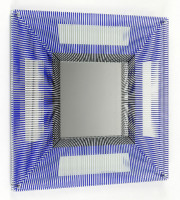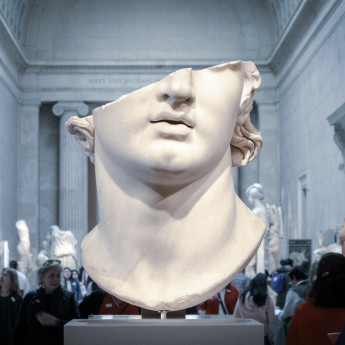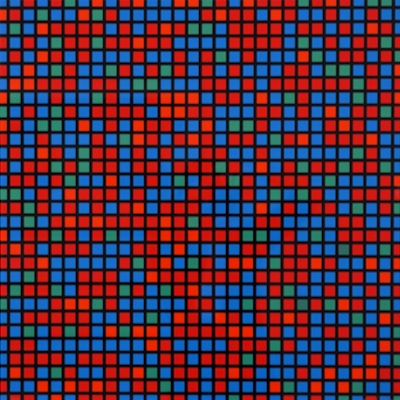
Details
Artist
Styles
wood, steel and serigraph // Antonio Asis’ Vibration Bandes Bleus et Rouges (2010) is a mixed-media work crafted from wood, steel, and serigraphy, reflecting Asis’ fascination with optical art and kinetic effects. This piece features an intricate grid of repeating vertical slits filled with alternating blue, red, and white bands, creating a vibrating visual rhythm. The alignment of colors and the spacing of the slits generate a pulsating effect, engaging the viewer’s perception and producing a sense of movement. Known for his exploration of geometric abstraction and visual dynamism, Asis’ work encourages interaction, as subtle shifts in perspective alter the perceived patterns. This limited edition piece exemplifies his skill in manipulating form and color to achieve optical illusions.
vibration bandes bleus et rouges, 2010
form
Medium
Size
52 x 52 X 13 cm
- Inches
- Centimeters
Edition
Price
- USD
- EUR
- GBP
Details
Artist
Styles
wood, steel and serigraph // Antonio Asis’ Vibration Bandes Bleus et Rouges (2010) is a mixed-media work crafted from wood, steel, and serigraphy, reflecting Asis’ fascination with optical art and kinetic effects. This piece features an intricate grid of repeating vertical slits filled with alternating blue, red, and white bands, creating a vibrating visual rhythm. The alignment of colors and the spacing of the slits generate a pulsating effect, engaging the viewer’s perception and producing a sense of movement. Known for his exploration of geometric abstraction and visual dynamism, Asis’ work encourages interaction, as subtle shifts in perspective alter the perceived patterns. This limited edition piece exemplifies his skill in manipulating form and color to achieve optical illusions.
- Recently Added
- Price (low-high )
- Price (high-low )
- Year (low-high )
- Year (high-low )
Antonio Asis
Vibration Bandes Noir, Bleu Et Turquoise, 2010
Sculpture / Object
Mixed Media
EUR 3,000
What is geometric abstract art?
Geometric abstraction is a form of abstract art that uses geometric shapes arranged in a non-illusionistic space (though not always) and combined into non-representational (non-objective) compositions. Based on years of artistic research, some artists have proposed that geometric abstraction offers a solution to modern challenges by rejecting traditional illusionistic practices in favor of clarity and simplicity.
































